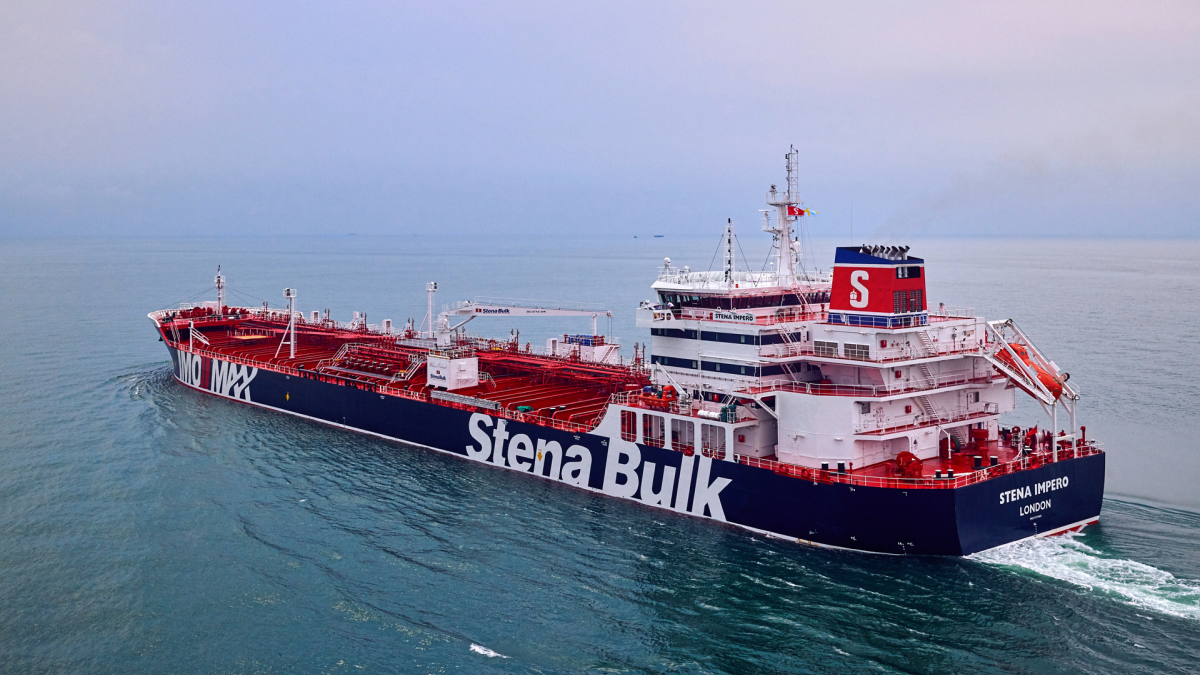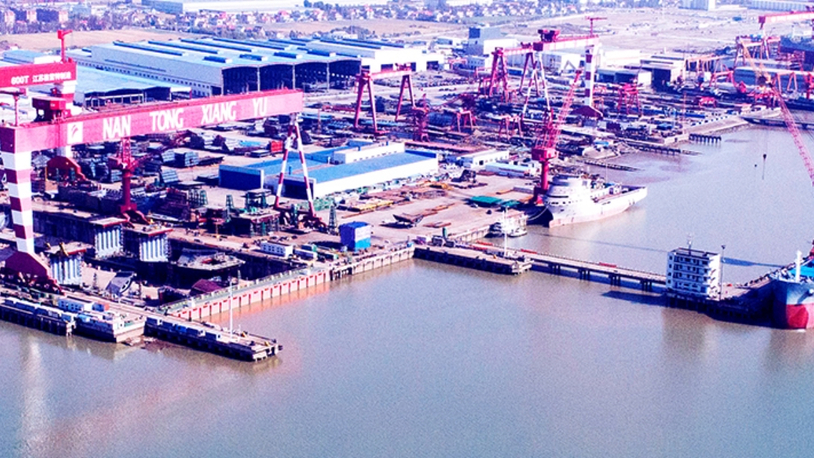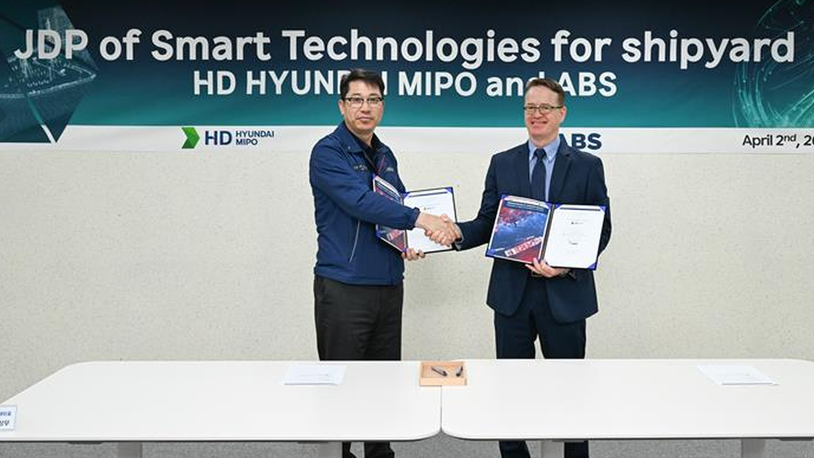Business Sectors
Events
Contents
Replacing fixed-pitch propellers to gain efficiency
Wärtsilä Propulsion discusses the impact of changes to a fixed pitch propeller’s diameter, number of blades, rpm and design point on propulsive efficiency
Wärtsilä Propulsion discusses the impact of changes to a fixed pitch propeller’s diameter, number of blades, rpm and design point on propulsive efficiency
Significant propulsive efficiency improvements can be achieved even when a fixed pitch (FP) propeller’s main dimensions remain unchanged. Assuming that boundary conditions (such as rpm, blade number and diameter) do not change and that nothing is added to the propulsion system, the following options can increase efficiency: reducing the blade area; changing the blade contour; modifying the radial pitch distribution to optimise loading distribution; and applying the Lips tip-rake concept.
In cases where these options cannot be applied it may still be possible for other changes to yield improvements: for example, changing the propeller diameter, possibly combined with adapting the rpm, can deliver significant improvements in propeller performance.
When designing a replacement propeller it is worth investigating the complete propulsion characteristics and considering these questions:
• is the propeller diameter optimum?
• is the number of blades the right choice or is it possible to improve efficiency or reduce vibrations by altering the number?
• is the design point of the propeller optimum with respect to the engine layout? (Perhaps the choice of another power-rpm ratio will make it possible to reduce fuel consumption)
• can the application of a nozzle or other energy-saving devices yield improvements?
Choosing the propeller diameter and number of blades is influenced by the load range limits of the engine and the chosen design point; available space in the stern frame is another consideration for the propeller diameter decision.
The natural frequency of a ship’s structure and/or number of engine cylinders can determine the choice of blade number: cylinder numbers that are multiples of the blade number may cause engine vibration problems.
Propeller diameter and blade number were most likely optimised during the design stage of the original propeller but are worth investigating again since some parameters may have been changed since. Reducing the design speed, for example, will dictate a lower design power, leading to another optimum diameter and/or number of blades.
Propeller optimisation in the example discussed here is based on a bulk carrier with these characteristics: service speed, 14.5 knots; engine power, 7,061kW; engine speed, 112 rpm; propeller diameter, 5,000mm; and four blades.
Propulsive efficiency here is the product of the propeller open water efficiency plus hull efficiency. The analysis therefore includes not just the propeller on its own but its interaction with the hull. The lowest fuel consumption is achieved by the highest propulsive efficiency.
Table 1 shows the efficiency effect in the above case when the propeller diameter is optimised. As indicated, increasing the diameter to an optimum 5,800mm achieves a propulsive efficiency improvement of almost 9 per cent, which translates directly into a 9 per cent reduction in fuel consumption.
It is possible, of course, that the larger diameter would not fit in the existing stern frame or that the propeller intersects the baseline of the ship. It must be remembered, too, that a smaller tip-hull clearance leads to higher pressure pulse levels. Nevertheless, when the diameter is increased by 400mm, for example, the efficiency improvement is still 6.6 per cent.
In this case it was assumed that the blade area ratio is constant, leading to a lower power density for the larger diameter. When the blade area ratio is adapted in such a way that the power density is kept constant, the propulsive efficiency gain – and hence the reduction in fuel consumption – is increased still further.
Table 2 gives the results of performing the optimisation process for the number of blades in the same example, the conclusion being that four blades are not optimum with regard to propulsive efficiency. A higher blade number yields an efficiency gain of a few per cent.
The fact that the number of blades has to be increased for a more efficient propeller shows that the original diameter of 5,000mm was too small, although other reasons (such as natural frequencies or number of cylinders) might have determined the existing blade number.
It might be difficult to change the propeller rpm at the design point for an existing installation. Assuming the speed can be changed, the propeller rpm was optimised for the same configuration and the results presented in Fig 1; this shows that by increasing the rpm to around 140 the propulsive efficiency improves by almost 5 per cent.
As noted above, the speed of 112 rpm may have been selected originally for other reasons, such as the installation of a specific engine type. In this case, however, an increased speed immediately results in a lower fuel consumption.
Reducing consumption in this manner is obviously not valid for every situation: there are cases where a decrease in rpm yields higher economy. It should also be noted that the propeller has to be redesigned in order to match a different speed.
In determining the optimum combination of propeller diameter, number of blades and rpm, it makes a difference in which sequence the optimisation process is performed. For the subject project, optimisation of diameter followed by blade number and then rpm resulted in the optimised combination presented in the second column of Table 3.
The propulsive efficiency improvement compared with the original situation is 9 per cent. As the diameter of 5,800mm might be a problem with regard to space in the stern frame, the optimisation was repeated by allowing a diameter increase of not more than 400mm. The same sequence of optimisation results in the combination shown in the third column of the table, this configuration yielding a propulsive efficiency improvement of 7.3 per cent.
It can be concluded in this case that the optimum propeller rpm is close to the present rpm, indicating that no special adaptations of the engine are necessary. Applying 112 rpm instead of 110 rpm delivers no significant difference in efficiency. The change in blade number might have more impact on the propulsion configuration (number of cylinders) and the ship’s structure.
Changing the design point of a propeller can achieve significant improvements in fuel economy but the changed point should fit within the allowable load range of the engine. If the engine characteristics are not changed, however, it is known that, for a two-stroke engine, an increase of rpm at the same power leads to a lower fuel consumption.
When aiming for lower consumption it is more favourable to design at a higher rpm, which is the same as applying a higher light running margin. There are two restrictions to increasing the light running margin: the rpm at the design point must not exceed the engine’s overspeed limit; and the propeller can no longer absorb maximum power in the ‘clean’ condition. This should not become a weakness in the ship’s operational freedom.
Fig 2 outlines the propeller curves when the rpm for the design point is increased. In the case of the ‘too light’ designed propeller, the trial propeller curve intersects the maximum rpm limit before reaching maximum power. Under service conditions, however, the propeller curve shows it is just possible to apply the maximum power to the propeller.
In propeller replacement projects it is feasible that there is no further need to use maximum power; this can be caused by a changed mission profile for the ship. It is also possible that the engine can no longer deliver maximum power because of its age. In these or similar cases the propeller can be designed lighter in order to secure a lower fuel consumption.
In many cases it is worth investigating whether a redefinition of the propeller design point is interesting, and what improvements in fuel economy can be achieved. Wärtsilä claims considerable experience in this field, which can be tapped to offer advice.
The effect on the propeller when changing the design point by increasing the rpm should not be forgotten; otherwise, the improvement gained is cancelled out by the effect on the propeller itself.
It is also important to consider pressure pulse levels and vibrations when optimising the propulsion system. The pressure pulse levels may increase, especially when applying a larger diameter propeller simply because of the smaller tip-hull clearance.
Pressure pulse levels acting on the hull increase in inverse proportion to the tip-hull clearance. Older ships normally have clearances that are relatively large and the consequences caused by a larger diameter propeller are acceptable. Such tonnage is also often of a heavier construction than more recent ships, which means that higher pressure pulses can be absorbed without creating unacceptable vibration or noise. MP
Related to this Story
Events
Maritime Environmental Protection Webinar Week
The illusion of safety: what we're getting wrong about crews, tech, and fatigue
Responsible Ship Recycling Forum 2025
© 2024 Riviera Maritime Media Ltd.













